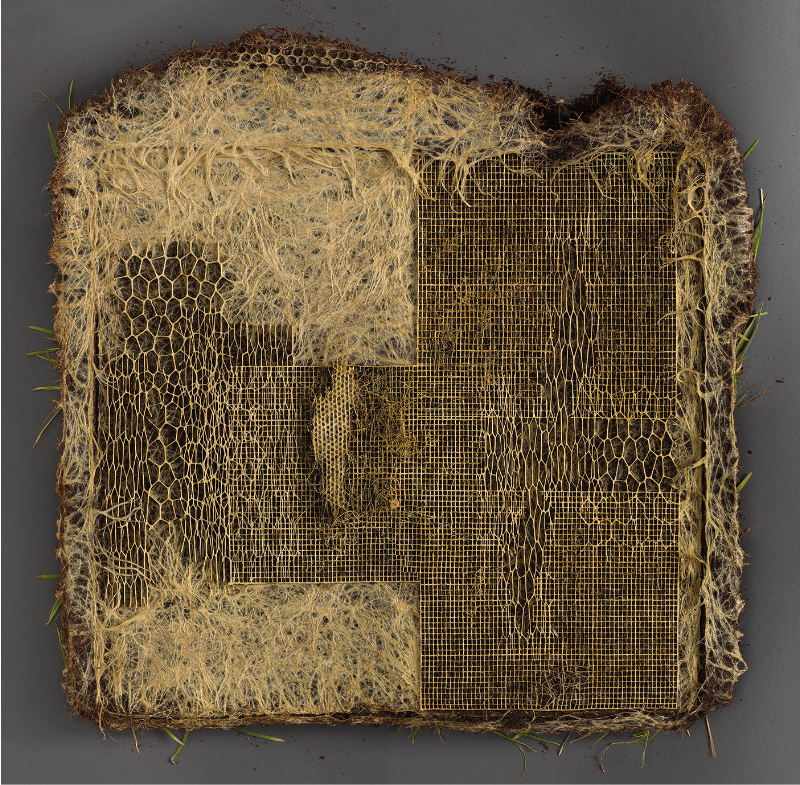Exhibition ‘Hyper Rhizome’ by Diana Scherer
From Sunday the 19th of January until 24th of Februari 2020
Gallery@droog
Staalstraat 7B, Amsterdam
Open Daily from 9.00 AM – 19.00 PM
In the solo exhibition Hyper Rhizome Diana Scherer shares with us a selection of growing objects, scientific research and plantrootweaving. For this installation she grew various wall hangings from roots.The new work is the continuation of the project Exercises in Rootsystem Domestication.
Charles Darwin was the first to watch the behaviour of roots. In his book The Power of Movements of Plants, he describes how roots do not passively grow down, but move and observe. A root navigates, knows what’s up and down, observes gravity and localizes moisture and chemicals. Darwin discovered that plants are a lot more intelligent, than everybody thought. For contemporary botanists, this buried matter is still a wondrous land. There is a global investigation to discover this hidden world. Scherer approaches the root system as if it were yarn. For example, the refined, white root structure of grass reminds her of silk and the powerful, yellowish strands of the daisy she compares to wool. She developed a technique to control the growth of plant roots and with Hyper Rhizome the natural network of the root system turns into a textile. Diana explores the relationship of man versus his natural environment and his desire to control nature. The living material forms the basis of her investigation. She works with biological processes and develops her work by making interventions, both intuitively or by scientific means. Exercises in Rootsystem Domestication originated as an art project with an intuitive approach. It has also developed into an innovative material research and pursuit for a new and suistainable textile. Working on this project Scherer shifts between disciplines, from design to art, craft and science. To develop this biotechnique she collaborates with biologists and engineers from TU Delft Materials Experience Lab and Radboud University Nijmegen.
More about Diana Scherer
The project & exhibition is supported by Bank Giro Loterij FondsTU Delft, Mondriaanfonds, FondsKwadraat and Radboud Univerity Nijmegen.

